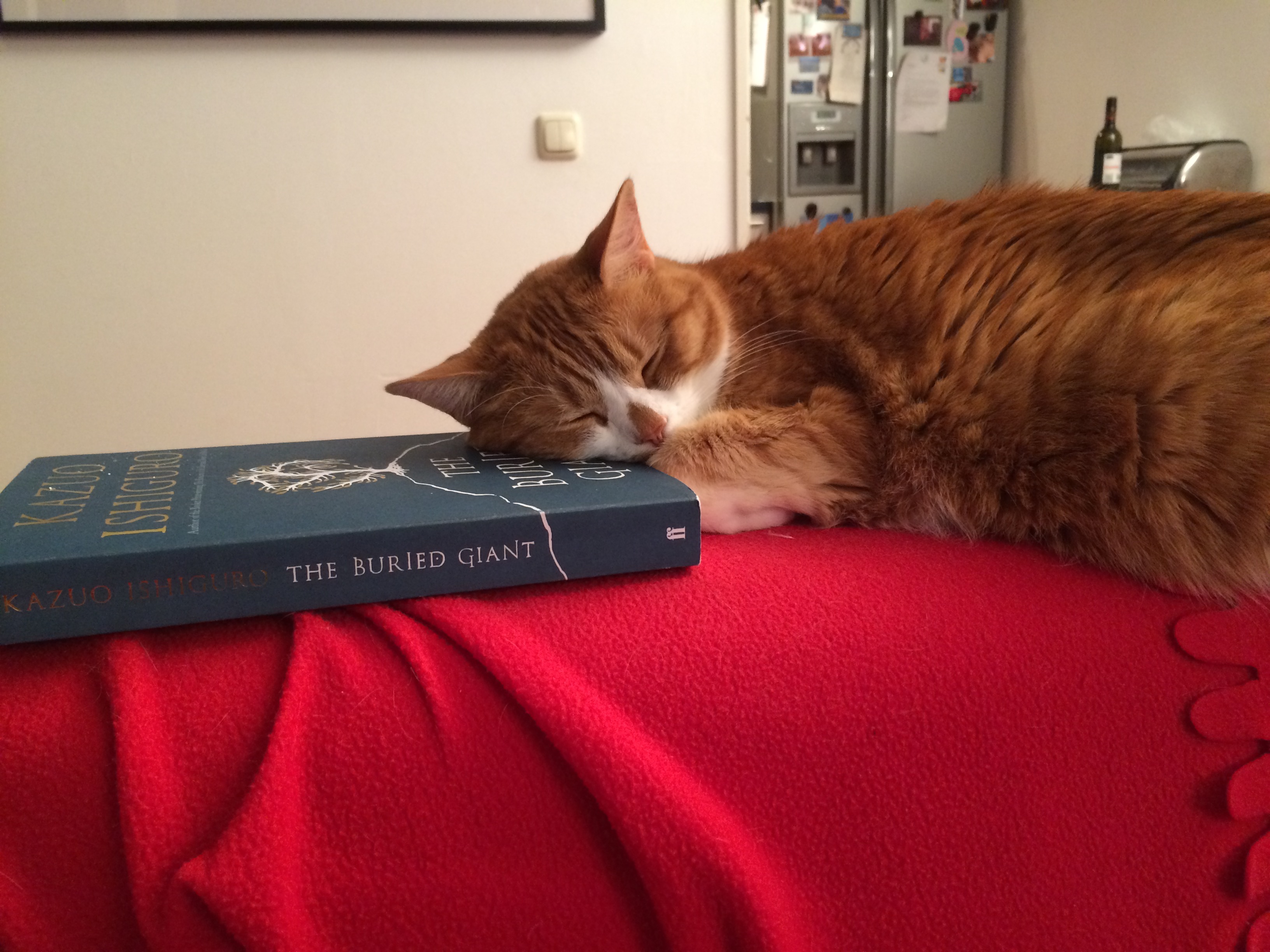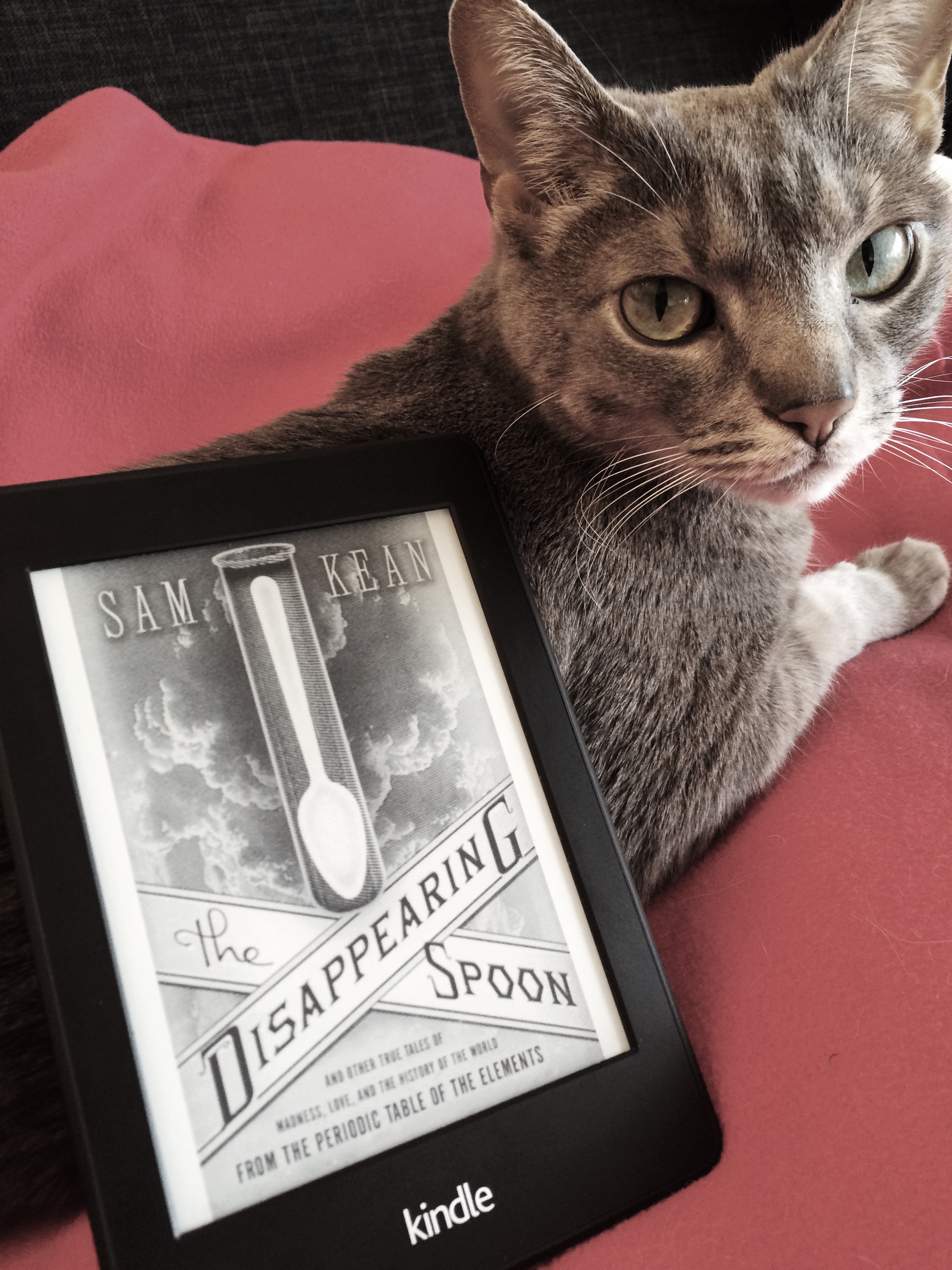The Buried Giant
 by Kazuo Ishiguro
by Kazuo Ishiguro
The only other book by Ishiguro that I’ve read is Never Let Me Go, which I loved. Other than a similarity in that feeling of being plunked abruptly into a world (a feeling I love), these books have almost nothing in common. I’d heard a little buzz about The Buried Giant when it came out and then picked it up at a holiday book swap that my book club put together. The book came with a subtle warning and caveat from its previous owner. “That’s a weird one,” she said. “I’m not sure I ever really got into it.” The Buried Giant is a weird one, but I enjoyed it for that. It’s been called allegorical, but I think I’d describe it more as a fable or a fairy tale. It reminds me of those long and rambling Chaucer-ish tales of knights and faeries and quests. There is a central plot, but the thematic elements of this book are what bind it together. It’s a little long-winded and meanders a lot, but the core idea of memory and aging was totally unique. Contemporary themes tucked inside a medieval quest fairly tale.
Four Corners: A Journey into the Heart of Papua New Guinea by Kira Salak
by Kira Salak
When I read nonfiction, I tend to gravitate either towards narrative styles, such as memoir and biography, or popular science books. Four Corners is a travel memoir that falls decisively into the first category. While a lot of this book does evoke a very specific sense of place, what impressed me most about it was how deeply personal it is. Salak has enough perspective about her journey to tell the story with clarity and insight, but is not so detached that it loses its power and rawness. Salak writes candidly about her profound unhappiness at the time she was in Papua New Guinea, intentionally – and almost suicidally – putting herself into increasingly more and more dangerous situations. Travel as self-harm. It’s a fascinating story about strength, connection and how we cope with or run from our inner demons.
Stuff Matters: Exploring the Marvelous Materials That Shape Our Man-Made World by Mark Miodownik
by Mark Miodownik
This book reminded me a lot of books by Mary Roach and Michael Pollan (particularly The Botany of Desire). Miodownik is a materials scientist and, using the contents of a photograph as a central hub, describes in interesting detail the various aspects of the materials, such as cement, glass and porcelain, that exist in the modern world. There is a little bit of history, but mostly the story is about the chemistry and physical science behind the functional materials that we take for granted. How glass is formed from sand in the desert, why your shitty IKEA drinking glasses seem to break so easily, and innovations in self-repairing cement technology (hint: bacteria!). The book is super nerdy but not overly academic, and gave me lots of fun trivia tidbits to share with fellow nerds at dinner parties.
Our Final Invention: Artificial Intelligence and the End of the Human Era by James Barrat
by James Barrat
Oh, this book. In theory, I think it’s an excellent idea to seek out information that is contradictory to your beliefs. Echo chamber, confirmation bias, etc etc. In practice, whenever I try to read something that I know has been written from an opposing viewpoint, I tend to cling even tighter to my previously held beliefs. Maybe if the author of this book had a more thorough (or any) scientific background, I would have been more inclined to allow myself to absorb Barrat’s manifesto about evil AI. As it happens, while I do think the AI singularity is a real possibility, I’m not convinced it will inevitably lead to a swift and merciless wiping out of the human race, a la Skynet. It’s a fascinating topic no matter how you spin it; unfortunately, with several logical fallacies and incomplete arguments, this book is more alarmist rant than objective assessment.
Shutter Island by Dennis Lehane
by Dennis Lehane
I really love the movie version of this book, with Leonardo DiCaprio, and I assumed the book would be at least as good. As it turns out, the movie is nearly shot-for-shot faithful to the book. So while it is as good as the movie, it doesn’t really offer any more enhanced detail or enriching backstory than what you already get in the movie. Still, it’s a fun and thrilling story and if you haven’t seen the movie yet, I’d recommend the book. If you have, hell, knock yourself out but don’t expect to be blown away with any revelatory deleted scenes.

The Art of Racing in the Rain by Garth Stein
by Garth Stein
This is the story of a family told through the eyes of the dog. I was hugely skeptical because I’m an asshole with a Vulcan heart made of coal, but by the end of this book, I was totally on board with the story. The dog-as-narrator plot seemed a little ham-handed and unnecessary to me, but it wasn’t so distracting that I didn’t enjoy the book overall. The dog isn’t overly prescient (but still a little prescient) and there are a few moments when the curtain is lifted and you’re able to infer what happens in reality based on the dog’s skewed impression of it. Not a very hardy read, but sweet.
The Disappearing Spoon: And Other True Tales of Madness, Love, and the History of the World from the Periodic Table of the Elements
 by Sam Kean
by Sam Kean
Another one for fans of Mary Roach and Michael Pollan. Although Disappearing Spoon has hard science as its framework, its heart is all history. Kean tells a thorough history of the creation of the periodic table as a whole, as well as a few element-specific anecdotes. He manages to weave in real chemistry amongst the stories of the humans that helped shape it and, although I hated chemistry in high school (totally not my fault), I found myself eating up these stories with relish.
Me Before You by Jojo Moyes
by Jojo Moyes
Not quite love story, not quite “girl discovers who she really is,” not quite tearjerker. It’s far from perfect – some of the characters (protagonist included) are sloppily drawn and a few of the plot elements feel like only filler – but I liked this book nonetheless. I don’t want to talk too much about it until after the movie comes out (after which point you’ll hear all about it), but this book wasn’t what I expected and regardless of its flaws, I have to respect its guts.
How to Build a Girl by Caitlin Moran
by Caitlin Moran
Deciding what to read next can be a tricky game; I don’t like to approach a book with preconceived opinions, but I want to read good stuff and usually get turned onto new books through recommendations. Caitlin Moran is an author that I’d heard about all over the bookish community and on several podcasts, and I thought I was in safe hands with this book. It’s not bad, by any means, but it never quite fulfills its own potential (granted, I likely inflated that potential to unachievable proportions). It tells an Almost Famous-ish coming of age story that is supposed to be fairly close to Moran’s own life. It starts strong but then at some point the best bits of the novel – the protagonist, Johanna’s, family and weirdness – get a little lost and then seem to fade away completely. For what it’s worth, I’ve heard Moran’s other book, How to Be a Woman (straight memoir) is better.
Runaway by Alice Munro
by Alice Munro
I used to hate short stories, but I’m starting to come around. There’s something about the pacing that I sometimes find difficult to enjoy, but after having read another of Munro’s collection of stories (The Love of a Good Woman) and the first volume of collected short stories
by W. Somerset Maugham, I have a much greater appreciation for a short story done right, and the intentional putting together of seemingly unconnected stories to make a collection. Runaway is probably the best example of the latter (and maybe the former, too, to be honest) that I’ve ever read. The women in the stories (the stories are all about women) are interesting and complex, and so beautifully and realistically written. There are a few stories that revisit characters from previous stories later in their life, and it speaks to Munro’s talent as a short story writer that they live perfectly in these condensed capsules, decades apart, and don’t require any filler that a full novel might offer.